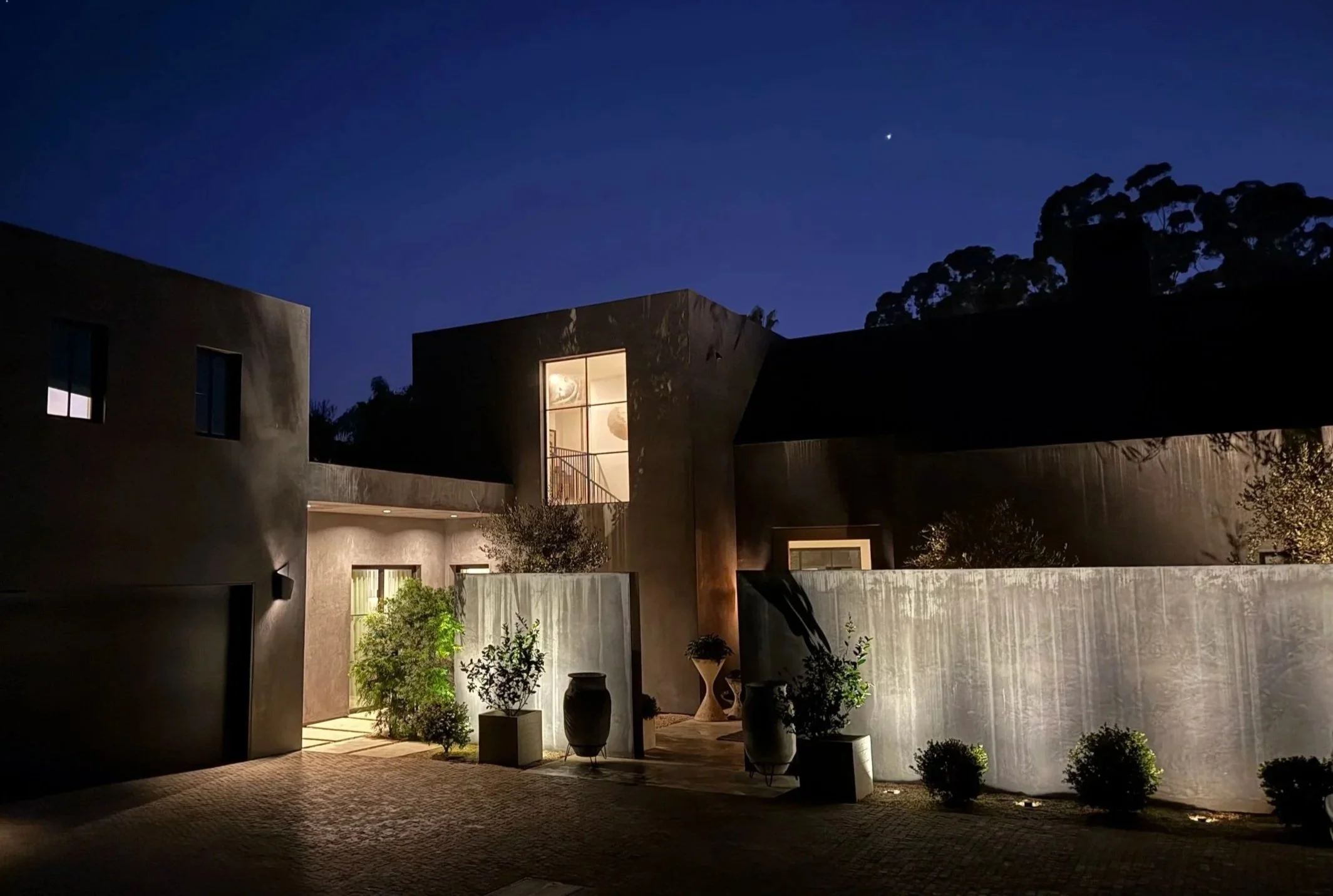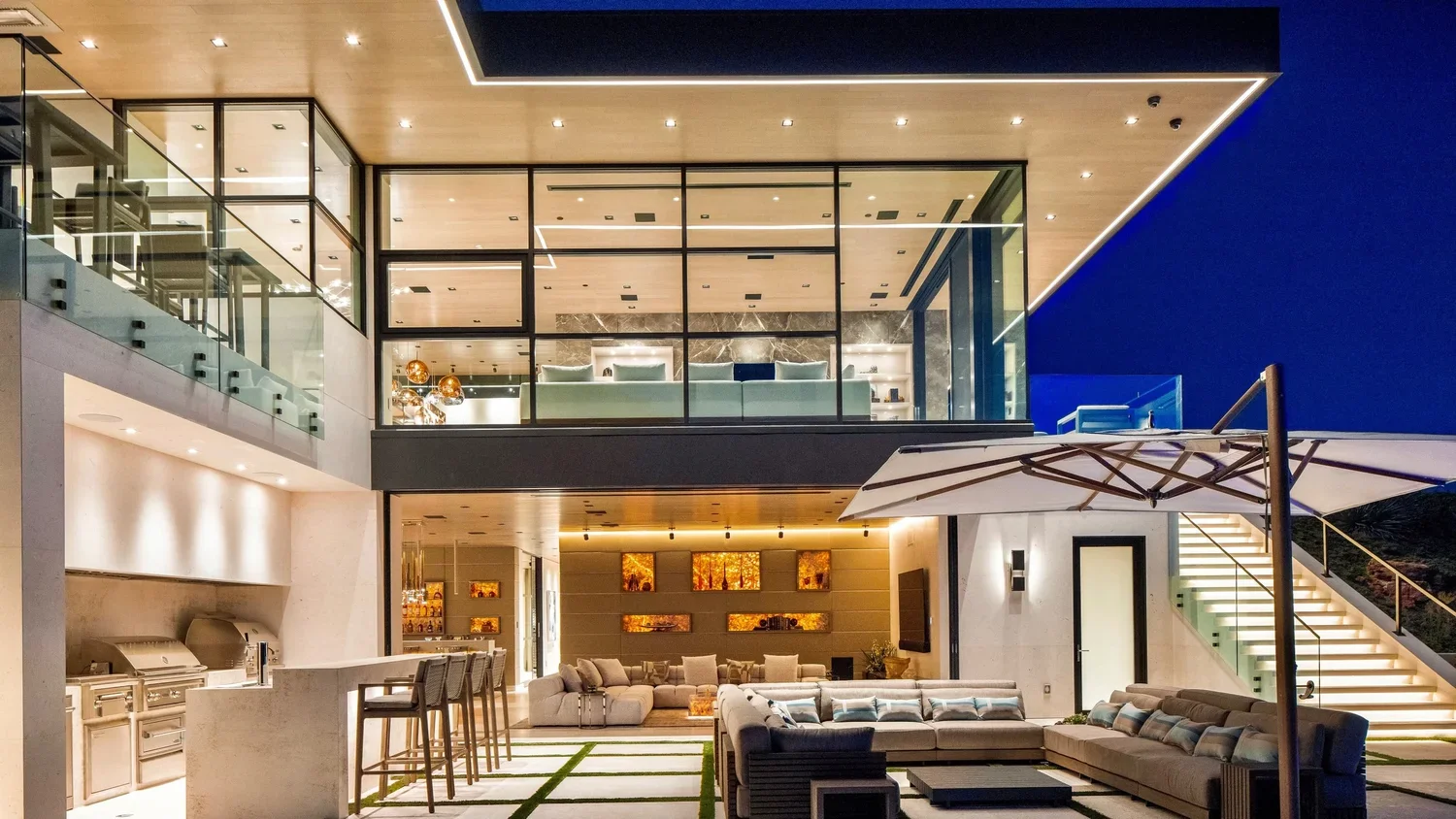Resilient by Design: Where Sustainability Meets Fire Resistance
In today’s world, architects and homeowners face a dual challenge: creating buildings that are both low-carbon and fire-resilient. The climate crisis demands more sustainable construction practices. At the same time, wildfires, especially in fire-prone regions like Malibu and the Pacific Palisades, require us to design structures that can withstand extreme heat and direct flame exposure without compromising safety or structural integrity. These two priorities — sustainable design practices and wildfire defense — may seem at odds at first. But innovations in the most common building materials, along with fire prevention measures, are helping bridge the gap between carbon-conscious and fire-smart design.
Rethinking Concrete: Fire-Resistant, Low-Carbon, and Ready for the Future
Concrete is a go-to material for fire resistance. After all, it doesn’t burn. But there’s a problem – traditional Portland cement is one of the most significant contributors to global carbon dioxide emissions. The good news; the industry is evolving. Enter low-carbon concrete, a concrete mix that replaces a portion of Portland cement with either fly-ash, slag, calcined clay, limestone, crushed glass, and/or other natural elements. The Low Carbon Initiative — a collaboration between firms like Burdge Architects, Marisol Development, The Malibu Foundation, and others — is working to accelerate the adoption of low-carbon materials and all-electric buildings throughout Southern California.
Timber: Eco-Friendly Fire Protection for Wood
At the other end of the spectrum is wood, a carbon-sequestering material. As trees grow, they take in carbon dioxide from the air and store it inside. When used for construction, that carbon stays trapped in the wood for decades. This makes timber a renewable and climate-friendly building material. However, in the event of a wildfire, that stored carbon is rapidly released back into the atmosphere. This makes fire prevention not just a matter of safety, but also a critical climate concern. But there's no need to abandon wood as a sustainable option. Two eco-conscious fire protection methods can help with fire safety.
1. Eco-Friendly Fire Retardant Sprays: At Burdge, we’ve been exploring liquid fire inhibitors. We’ve recently been introduced to Mighty Fire Breaker’s CitroTech, a non-toxic, environmentally safe fire protection. This biodegradable, VOC-free spray can be applied to timber, framing, and other materials to help prevent ignition, and it’s safe for people, pets, and the planet.
2. Shou Sugi Ban: This traditional Japanese technique involves charring the surface of wood to enhance fire resistance and durability. It also creates a striking aesthetic. While some homebuilders use it as an exterior material, at Burdge, we often source it as a decorative interior surface. We love using it for fireplace walls, which gives interiors a moody depth while being fire-smart.
Steel: Fire Resilient, But at a Carbon Cost
Steel is the third primary building material, and when it comes to fire safety, it’s hard to beat, as it’s non-combustible. However, producing virgin steel is extremely carbon-intensive. The key to making steel a more climate-friendly option lies in using recycled content. Choosing steel with a high percentage of post-consumer recycled material can dramatically reduce its embodied carbon. When sourced responsibly, steel becomes not just fire-resilient, but also a viable part of a low-carbon, climate-smart building strategy.
Fire Safety Starts with Prevention, the Most Eco-Friendly Protection!
Ultimately, the most significant climate win is mitigating fire destruction, or in a perfect world, avoiding fires altogether. When a wildfire destroys a structure, the carbon emissions from burned materials, debris removal, and reconstruction are staggering. That’s why fire-prevention design is increasingly viewed as a form of climate resilience, and one that we have deeply embraced.
Fireproof Design and Carbon-Neutral Design Are No Longer Two Separate Goals
Fireproofing and being eco-conscious are intertwined imperatives. Whether you're building a hillside home in Malibu or a cozy retreat in Idaho, choosing materials and systems that support both sustainability and survivability is no longer optional; it’s essential. At the end of the day, carbon-neutral buildings that survive wildfires aren’t just better for the planet — they’re better for people, communities, and the future we’re building.


